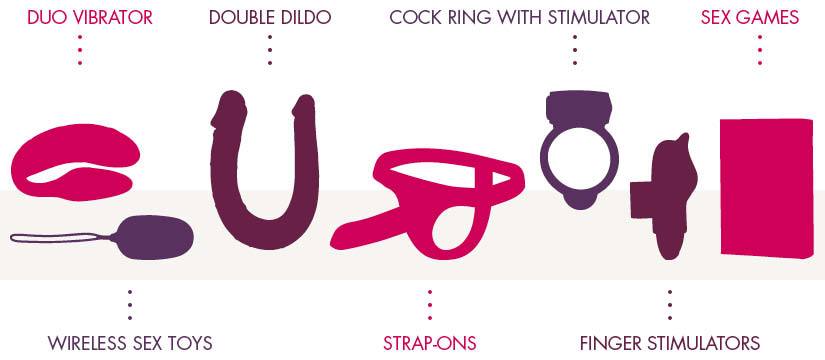Mark Ruffalo has a special screen presence. He plays tender men. Thoughtful men. Imperfect men. When people search for “Mark Ruffalo sex scene,” they usually mean the intimate beat from The Kids Are All Right (2010). That scene became a talking point. Not for shock. But for feeling. For choices. For consequences.
Below is a complete FAQ. It explains the film context, why the moment matters, how the camera treats intimacy, and what viewers can learn about consent and relationships. The tone is simple. The language is clear. No graphic detail. Just careful insight you can use.
What movie are we talking about?
The Kids Are All Right is a 2010 comedy-drama. Two teens find their sperm donor. He meets the family. Tension follows. Laughter, too. The film treats adult desire as part of everyday life. It is warm. It is messy. It is human.
Who does Mark Ruffalo play?
He plays Paul. He owns a small restaurant. He is relaxed. He is charming. He wants to help. He also wants to be wanted. That last part is important. It explains his later choices. It also explains why people still debate the scene.
Why is the “Mark Ruffalo sex scene” singled out?
Because it is a turn. A hinge in the story. Two adults cross a line. The moment is not just heat. It is about being seen. Being valued. And about the cost of getting that feeling the wrong way. The film asks, “What does validation do to us?” It shows the thrill. Then it shows the bill.
Is the scene explicit?
No. It is frank. It is intimate. But it is not graphic. The camera stays near faces. It glides to after-beats. It respects bodies. It respects the audience. What you remember most is not skin. It is breath. It is pause. It is the look that says, “We made a choice.”
What is the larger story around the scene?
A family is tested. Two mothers do their best in a long partnership. Two teens grow fast. A donor becomes real, not an idea. The scene sits inside a bigger question: how do grown people handle hunger for attention? The film keeps pointing back to love, repair, and daily care.
How does direction shape the feel?
The direction uses natural light. Small rooms. Quiet timing. Scenes begin casual and slide into privacy. The camera holds on hands. On eyes. On breath. It makes intimacy feel like any other talk. It treats closeness as normal, not as a stunt.
What makes Ruffalo stand out here?
He plays a man who listens. He smiles with his eyes. He can be careless, but not cruel. You believe him. You see why someone would feel special around him. That belief powers the scene. It also powers the pain that follows. It is a humane performance. Soft at the edges. Honest at the core.
Does the movie glamorize an affair?
No. It shows the pull. Then it shows the price. The aftermath lands hard. There are tears. There are talks. There is repair work. The film is not wagging a finger. It is not cheering, either. It is saying, “Choices ripple. Own them.”
Why do people still search for it?
Because the scene ties desire to identity. It is about who we are when someone finally says, “I see you.” Viewers remember that feeling. They remember the camera’s patience. They remember how the story tilts after this point. That is why the search keeps returning.
Is this an LGBTQ+ landmark?
It is one of the mainstream films that showed a same-sex family with humor and detail. Not as an issue. As a life. The donor plot tests the couple. The ending points back to the family. It says, “This house stands.”
What can viewers learn about intimacy from this film?
Talk first. Check in. Look for why you want the moment. Is it love? Is it validation? The film says attention can feel like oxygen. But oxygen without trust burns. The best intimacy is steady and kind. The scene makes that point without preaching.
How do editing and music support the moment?
The editing waits. It trims just before things get loud. It cuts to the human echo. A breath. A sigh. A quiet line. The music keeps the mood honest. It does not shout. It lets actors carry the weight.
What should sensitive viewers expect?
Expect mature themes. Expect a real-world tone. But not shock. If you prefer to set your own pace, read a brief summary first. If you watch with a partner, agree on pause points. You can always step away. Finish later. Your comfort matters.
What is the lesson for real life?
Say what you need. Ask to be seen by your partner. Do it early. Do it often. Let attention live inside the relationship you value. The film shows what happens when that talk comes too late.
How does the film resolve the tension?
With small gestures. With hard talks. With a quiet promise to try again. There is no movie magic reset. There is work. There is care. That is the point. Love lasts because people choose it, over and over.
How does this compare to other Mark Ruffalo roles?
He often plays men who feel deeply. Men who stumble and then do better. This film sits in that lane. It shows why audiences trust him. He leads with empathy. Even when he fails, he looks for the right next step.
Does the scene change how you see the characters?
Yes. It exposes a crack. It exposes need. It reveals kindness, but also the risk of chasing sparks outside the circle. It pushes everyone to be honest. That honesty is the real climax of the film.
Can one scene shape a film’s legacy?
It can. When a scene holds theme, it becomes shorthand. People say, “You know, that moment.” They mean the hinge. They mean the choice. This is that moment. It is the point where everything tilts.
How should you talk about on-screen intimacy with a partner?
Keep it short and kind. Try this:
- “I liked how they asked with their eyes.”
- “I prefer fades to black.”
- “Can we pause if I need a break?”
- “What part felt real to you?”
This turns a movie into a warm conversation, not an awkward one.
How to watch intimate films with care
Set a rule: your comfort comes first. Read a summary if that helps. Keep water nearby. Sit close, but not trapped. Use the pause button freely. Debrief at the end. Share one thing you liked. Share one thing you would change next time.
If I like close, upright intimacy on screen, what should I read for real life?
If you enjoy scenes with chest-to-chest contact and calm control, you might like ideas in the Chairman sex position. It is a supportive setup. It favors eye contact, breath, and steady pace. It is simple. It is gentle. And it focuses on comfort.
Extended FAQ (Clean, Non-Graphic)
Q1) What exactly happens around the scene?
Two adults cross a line after a string of small signals. They feel seen. They feel wanted. Then the feeling meets reality. That is where the story truly begins.
Q2) Does the movie “punish” characters for desire?
No. It holds them accountable. It honors longing but also shows cost. It lets people be complicated, not wicked.
Q3) Is the camera respectful?
Yes. It frames intimacy as part of life. It shows faces. It shows hands. It steps back before things become explicit.
Q4) How do the actors make it feel real?
They play subtext. They use breath, half-smiles, and tired eyes. They listen. Real listening is the secret to real chemistry.
Q5) Why does this resonate with older viewers?
Because it understands long partnerships. It knows routine can numb the senses. It knows attention feels like a miracle. It also knows that the cure for numbness is care, not chaos.
Q6) Is this movie for younger viewers?
It is an adult story. The tone is honest and mature. If you prefer lighter fare, pick another title. If you want a lived-in drama, this works.
Q7) What does the film say about family?
That family is built daily. It is chores and jokes and shared meals. It bends. It can also stand back up. That is the hope in the final scenes.
Q8) Does the scene rely on shock value?
No. Surprise, yes. Shock, no. The power lies in the afterward. In the look that says, “What have we done?” In the door that no longer feels simple.
Q9) What skills can couples copy from the movie?
Honest check-ins. Gentle pauses. Owning mistakes without excuses. Saying, “I need you to see me,” before a crisis.
Q10) If the scene makes me uneasy, is that wrong?
Not at all. Unease is a signal. Talk about it. Ask why. It may reveal needs in your own relationship. Use it to get closer, not to shut down.
Q11) How does pacing affect the mood?
Slow pacing gives space for thought. It lets desire and doubt share the same frame. You feel both. That is real life.
Q12) Is the film optimistic?
Yes, but not naive. It believes people can repair. It also believes repair takes work. That blend feels true.
Q13) What makes the scene different from many “sexy” scenes?
It is about meaning, not spectacle. It is about being seen. It is about the next morning. That is rare.
Q14) What is one smart way to watch this with a partner?
Plan a debrief. Ask, “What did you feel for each character?” Let empathy lead. You learn a lot that way.
Q15) What simple line captures the lesson?
“Attention is powerful. Use it inside the life you want.”
Practical takeaways for viewers and couples
- Talk before touch.
- Ask for attention early.
- Use the pause button.
- Debrief with kindness.
- Turn movie sparks into gentle ideas for real life.
- Keep sex scenes in context. Story first. People first.
A short viewing plan you can use tonight
- Read a two-line summary so you know the tone.
- Watch in a calm room. Soft light. Phones off.
- Pause once if feelings spike.
- At credits, trade two sentences each: one “I liked,” one “I wonder.”
- End with water and a hug. Keep it simple.
Final words
People search “Mark Ruffalo sex scene” because they remember how it felt. Tender. Nervous. Human. The movie shows that intimacy is not a trick. It is a conversation. It is choice plus consequence. It is warmth plus repair. If you watch the film, look for the small signals. The breath before the line. The hand that hesitates. The cut that saves privacy. That is where the meaning lives.
Keep those lessons for real life. Ask for what you need. Listen when your partner speaks. Build a home where attention is safe and steady. That is the love the film points to. And it is a kind love to practice—on Valentine’s week, on a random Tuesday, or any night you choose.



![Most Powerful Bullet & Mini Vibrators [Tested in 2025]](https://couplepleasure.com/wp-content/uploads/2025/10/image-11-2.jpeg)
